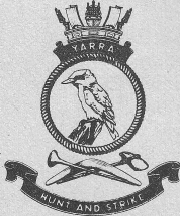In our September, 1976 issue we featured an article entitled ‘North of Gallipoli’ in which the author, Commander George Nekrasov, wrote of the relatively unknown operations of the Russian Black ...
Article topics
HMS Exeter at the Battle of River Plate
The Navy – Old and New
THE NAVY IN THE EARLY YEARS of the century prided itself in being capable of doing anything anybody else could do and do it better. It was the last years ...
The Legend of Arnold Green
The late Commander Arnold Holbrook Green, O.B.E., D.S.C. and Bar, R.A.N. became a legend in the Royal Australian Navy in his own lifetime. During the war a British Admiral informed ...
The Solent Review – 1909
Alphabetical List Of British Warships Reviewed by the King in the Solent, 1909. 1 H.M.S. Achilles Armoured Cruiser 13,550 tons Comdr. Wm. C.M. NICHOLSON 2 H.M.S. Adventure Scout 2,670 tons ...
Japan’s Balloon Bombs
US member, Douglas Rubb, served on Admiral Halsey’s staff in the Pacific during World War 2. From mid-1942 until April 1945 he was closely connected with investigations into Japan’s secret ...
The Guns of Singapore
One of the great mysteries of World War 2 was the ultimate fate of Singapore’s batteries of 15 inch guns. Records do not clearly indicate whether all the guns were ...
RAN Guarded Nip Prisoners 1945-46
She Was the Best – HMAS Warramunga
Commander Alliston is well fitted to speak of Australian ships and Australian seamen. On 15th June 1941 while commanding HMS Javelin he went to the aid of HMAS Nestor, fatally ...
HMAS Quiberon
WHEN MR. MENZIES WAS IN BRITAIN in early 1941 it was suggested to him that the RAN should man the remaining three ‘N’ Class destroyers to make up a full ...
Clearance Divers Now 25
The Silver Anniversary of the Royal Australian Navy’s Clearance Diving Branch was celebrated this month and to mark the occasion we are publishing extracts from United and Undaunted by Lieutenant ...
North of Gallipoli – Black Sea 1914-1917
Gun Battle on the Han
The Holman Projector
The emergencies of war and the unpreparedness of Britain for a world war have tested the inventiveness of the nation to build new and often quite bizarre weapons. World War ...
Lord Nelson’s Prayer
On the morning of 21st October, 1805, the combined fleets of France and Spain then in sight. May the great God, whom I worship, grant to my country and for ...
A Battleship for the RAN – considerations 1937-49
The Mystery of Airship R31
The Sea War in Korea 1950 – 1953
Spectacle Island Command 1894 – 1900
Boxer Rebellion Journal
Alan Payne – Naval Constructor Supreme
The Fleet off Crete
HMAS Cape Leeuwin
Ship Badges – Royal Australian Navy
The Entire Convoy was Sunk
Able Seaman Bob Collins was captured in March 1942 after the sinking of HMAS Perth and USS Houston at the Battle of Sunda Strait. After working on the Burma-Siam Railway, Collins ...




